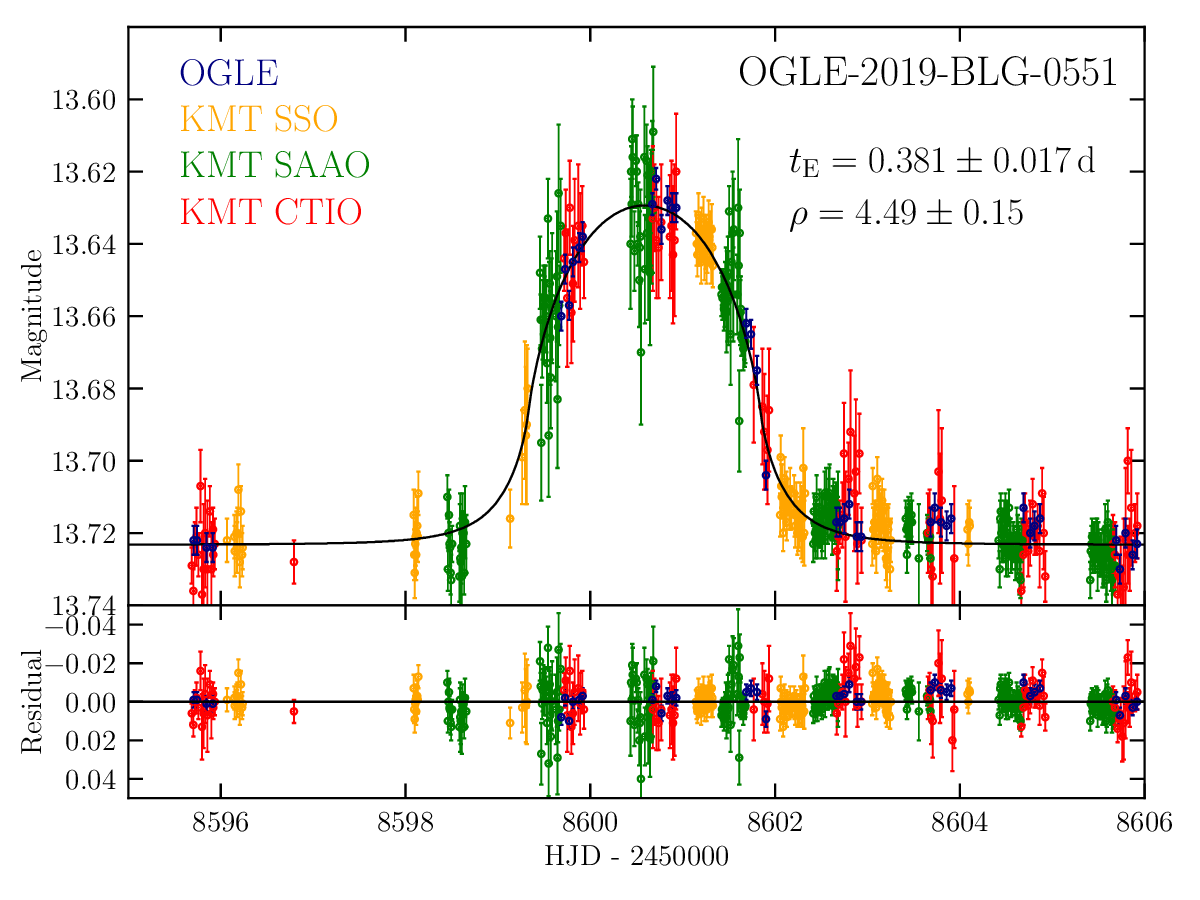A free-floating or wide-orbit planet in the microlensing event OGLE-2019-BLG-0551
High-cadence observations of the Galactic bulge by the microlensing surveys led to the discovery of a handful of extremely short-timescale microlensing events that can be attributed to free-floating or wide-orbit planets. Here, we report the discovery of another strong free-floating planet candidate, which was found from the analysis of the gravitational microlensing event OGLE-2019-BLG-0551. The light curve of the event is characterized by a very short duration (< 3 d) and a very small amplitude (< 0.1 mag). From modeling of the light curve, we find that the Einstein timescale, tE=0.381±0.017 d, is much shorter, and the angular Einstein radius, θE=4.35±0.34 μas, is much smaller than those of typical lensing events produced by stellar-mass lenses (tE∼20 d, θE∼0.3 mas), indicating that the lens is very likely to be a planetary-mass object. We conduct an extensive search for possible signatures of a companion star in the light curve of the event, finding no significant evidence for the putative host star. For the first time, we also demonstrate that the angular Einstein radius of the lens does not depend on blending in the low-magnification events with strong finite source effects.

Light curve of the ultrashort microlensing event OGLE-2019-BLG-0551, which was likely caused by a free-floating planet
Please cite the following paper when using the data or referring to these OGLE results: Mróz et al. 2020, arXiv:2003.01126.
 back
back